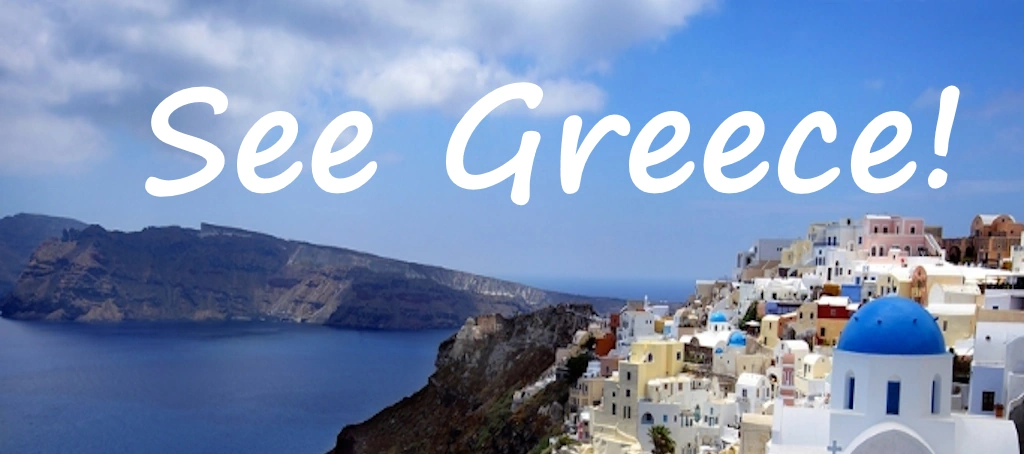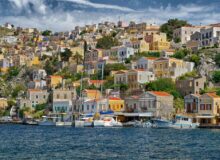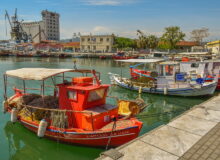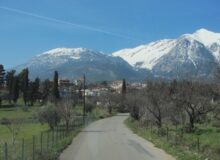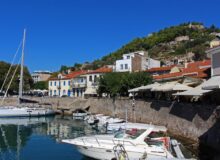The See Greece guide to the island of Kythira with a brief history and travel information on how to get there by ferry or by air and what to see and do.

Introduction
Nestled between the Peloponnese and Crete, the Greek island of Kythira (also spelled Cythera or Kithira) is a hidden gem in the Ionian and Aegean Seas. Unlike the more tourist-heavy Greek islands, Kythira offers an unspoiled, tranquil escape with stunning landscapes, rich history, and authentic local culture.
This guide covers everything you need to know about visiting Kythira, including:
– Location & Geography
– A Brief History
– What to See & Do
– Best Time to Visit
– How to Get There (By Air & Ferry)
1. Where is Kythira?

Kythira is located at the crossroads of the Ionian and Aegean Seas, south of the Peloponnese and northeast of Crete. Despite being administratively part of the Attica region, its culture and architecture have strong influences from both the Ionian Islands and Crete.
The island spans about 278 km², with a rugged coastline featuring secluded beaches, dramatic cliffs, and charming fishing villages. Its capital, Chora (Kythira Town), is a picturesque settlement with Venetian castles, narrow alleys, and breathtaking sea views.
2. A Brief History of Kythira
Kythira’s history is as rich as its landscapes, shaped by various civilizations over millennia:
Ancient Times
– According to Greek mythology, Kythira was the birthplace of Aphrodite, the goddess of love, who rose from the sea foam near the island.
– The island was inhabited since Minoan times (around 3000 BC) and later became a Spartan territory.
Medieval & Venetian Rule
– In the 13th century, the Venetians took control and built the Castle of Chora, which still stands today.
– Due to its strategic position, Kythira was frequently attacked by pirates and rival empires, including the Ottomans.
Modern Era
– Kythira became part of Greece in 1864, along with the Ionian Islands.
– Many locals emigrated to Australia in the 20th century, creating a large Greek-Australian diaspora with roots in Kythira.
Today, the island retains its old-world charm, with Venetian mansions, Byzantine churches, and a slow-paced way of life.

3. What to See & Do on Kythira
Must-Visit Towns & Villages
– Chora (Kythira Town) – The island’s capital, featuring a Venetian castle, cobbled streets, and panoramic views.
– Kapsali – A scenic seaside village with two bays, perfect for swimming and dining by the water.
– Avlemonas – A charming fishing village with a small fortress and crystal-clear waters.
– Mylopotamos – Known for its waterfalls, Venetian architecture, and the Cave of Agia Sofia.
Top Beaches
– Kalami Beach – A secluded pebble beach with turquoise waters.
– Melidoni Beach – A long sandy beach ideal for families.
– Firi Ammos – A unique red-sand beach surrounded by cliffs.
– Diakofti – A shallow, sandy beach near the port, great for snorkeling.
Historical & Cultural Sites
– Castle of Chora – A Venetian fortress offering stunning sunset views.
– Monastery of Panagia Myrtidiotissa – The island’s most important religious site.
– Paleochora – A ruined Byzantine ghost town, once the medieval capital.
– Bridge of Katouni – A 19th-century stone bridge, one of the largest in Greece.

Outdoor Activities
– Hiking – Explore trails leading to waterfalls, caves, and ancient ruins.
– Scuba Diving – Discover underwater caves and shipwrecks.
– Boat Trips – Visit nearby islets like Antikythira or secluded beaches.
Local Cuisine & Dining
Kythira’s food is a blend of Cretan and Ionian flavors. Must-try dishes include:
– Lobster pasta (Astakomakaronada) – A specialty in Avlemonas.
– Sfougato – A local cheese pie.
– Honey & Almond Sweets – Made from local produce.

4. Best Time to Visit Kythira
Kythira has a Mediterranean climate, with hot summers and mild winters.
– Best Months (May-June & September-October) – Pleasant weather, fewer crowds, ideal for hiking and sightseeing.
– Peak Season (July-August) – Busiest with tourists, great for beach lovers but more expensive.
– Off-Season (November-April) – Quiet, with some businesses closed, but perfect for solitude and nature walks.
Festivals & Events:
– Panagia Myrtidiotissa Festival (August 15) – A major religious celebration.
– Kythira Music Festival (Summer) – Classical concerts in historic venues.
5. How to Get to Kythira
By Air
– Kythira National Airport (KIT) has seasonal flights from Athens (45 min) via Olympic Air and Sky Express.
– In summer, there are occasional flights from Thessaloniki and Crete (Heraklion).
By Ferry
Kythira is well-connected by ferry from mainland Greece and nearby islands:
From Athens (Piraeus Port)
– Hellenic Seaways & ANEK Lines operate routes (6-8 hours, depending on the vessel).
– Fast ferries take around 4.5 hours.
From the Peloponnese (Neapoli & Gythio)
– Ferries from Neapoli (1.5 hours) and Gythio (2.5 hours).
From Crete (Kissamos Port)
– A 3-hour ferry connects western Crete to Kythira.
From Other Ionian Islands (Zakynthos, Kefalonia)
– Seasonal routes may be available in summer.

Getting Around Kythira
– Car Rental – Recommended for exploring remote beaches and villages.
– Local Buses – Limited but connect main towns.
– Taxis – Available but best to book in advance.
Final Kythira Tips:
– Book accommodations early in peak season.
– Rent a car for maximum flexibility.
– Pack comfortable shoes for hiking.
